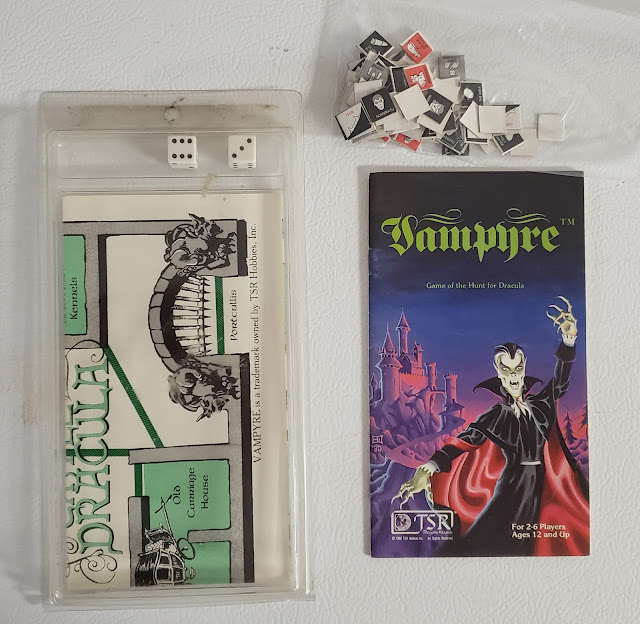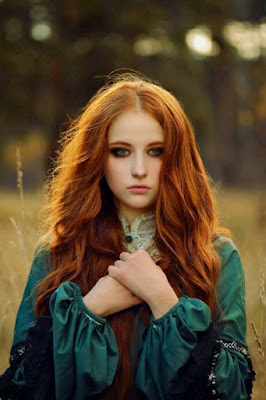Certainly, in terms of fans, Star Frontiers has Alternity beat. But more on that soon.
For this review, I am considering the PDFs and Print on Demand versions of both Star Frontiers: Alpha Dawn and Star Frontiers: Knight Hawks. I am also going to go with my recollections of playing the game when it first came out.
The Alpha Dawn book is designed by "TSR Staff Writers" but we know ow that a huge bulk of the work was done by David "Zeb" Cook and Lawrence Schick. Knight Hawks was designed primarily by Douglas Niles. The cover art in both cases was done by Larry Elmore with interior art by Elmore and Jim Holloway with contributions by Jeff Easley, Tim Truman, and even some Dave Trampier. Keith Parkinson would go on to do some other covers in line as well.
While originally boxed sets (gotta love the early 1980s for that!) the PDFs break all the components down into separate files. Handy when you go to print the counters or the maps. The Print on Demand versions put all the files together into an attractive soft-cover book for each game. The maps are published in the back, but you will want to print them out for use.
Alpha Dawn is the original Star Frontiers game. The box game with two books, a Basic and Expanded game rules, some maps, counters, and two 10-sided dice. The rules indicate that one is "dark" and the other "light" to help when rolling percentages, but mine were red and blue. Go figure.
The Basic Game is a 16-page book/pdf that gives you the very basics of character creation. There are four stat pairs, Strength/Stamina, Dexterity/Reaction Speed, Intelligence/Logic, and Personality/Leadership. These are scored on a 0 to 100 scale, but the PCs will fall between 30 and 70. Higher is better. These can be adjusted by species and each individual score can also be changed or shifted.
The four species are humans, the insect-like Vrusk, the morphic Dralasites, and the ape-like Yazirian. Each species of course has its own specialties and quirks. I rather liked the Dralasites (whom I always pronounced as "Drasalites") because they seemed the oddest and they had a weird sense of humor.
We are also introduced to the worm-like Sathar. These guys are the enemies of the UPF (United Planetary Federation) and are not player-characters.
The basics of combat, movement, and some equipment are given. There is enough here to keep you going for bit honestly, but certainly, you will want to do more. We move on then to the Expanded rules.
The Expanded Rules cover the same ground but now we get more details on our four species and the Sathar. Simple ability checks are covered, roll d% against an ability and match it or roll under.
Characters also have a wide variety of skills that can be suited to any species, though some are better than others, Vrusk for example are a logical race and gain a bonus for that. Skills are attached to abilities so now you roll against an ability/skill to accomplish something. Skills are broken down into broad categories or careers; Military, Tech, and Bio/Social.
Movement is covered and I am happy to say that even in 1982 SF had the good sense to go metric here.
There are two combat sections, personal and vehicle. These are not starships, not yet anyway, and were a lot of hovercars and gyro-jet guns.
There is a section on creatures and how to make creatures. I am afraid I took that section a little too close to heart and most of my SF games ended up being "D&D in Space" with the planets being used as large dungeons.
The background material in the Frontier Society though is great stuff. I immediately got a good just of what was going on here and what this part of the galaxy was like. While Earth was never mentioned, you could almost imagine it was out there somewhere. Either as the center of UPF (Star Trek) or far away, waiting to be found (Battlestar Galactica).
This book also includes the adventure SF-0: Crash on Volturnus.
When it comes to sci-fi some of the rules have not aged as well. Computers still feel very limited, but the idea that as we approach the speed of light we can enter The Void has its appeal.
Star Frontiers: Knight HawksAh. Now this game. Star Frontiers was great, but this game felt like something different. Something "not D&D" to me.
In fact I have often wondered if Knight Hawks had not been a separate game in development by Douglas Niles that they later brought into the Star Frontiers line. I also think that TSR was also suffering a little bit of what I call "Traveller Envy" since this can be used as an expansion, a standalone RPG, and as a board game!
Like Alpha Dawn, this game is split into four sections. There is a "Basic" game, and "Advanced" or "Expansion" rules (and the bulk of the book), an adventure, "The Warriors of White Light", and all the counters and maps.
As far as maps go, that hex map of empty space is still one of my favorites and fills me with anticipation of worlds to come.
The PDF version splits all this into four files for ease of printing or reading. The Print on Demand book is gorgeous really. Yes...the art is still largely black and white and the maps and counters are pretty much useless save as references, but still. I flip through the book and I want to fire up the engines of my characters' stolen Corvette, the FTL Lightspeed Lucifer. Complete with the onboard computer they named Frodo.
The Basic rules cover things like ship movement, acceleration, and turning, along with ship-to-ship combat. By itself, you have the rules for a good ship combat board game. It works fine as long as you don't mind keeping your frame of reference limited to two-dimensional space.
The Expanded rules tie this all a little closer to the Alpha Dawn rules, but I still get the feeling that this may have started out as a different sort of game that was later brought into the fold of Star Frontiers.
Ships are largely built and there is a character creation feel to this. Their 80's roots are showing, no not like that, but in that, the best engines you can get for a starship are atomic fission. Of course, no one just gets a starship, you have to buy it and that often means taking out a loan or doing a bunch of odd jobs to raise the credits. Often both. I don't think I ever actually bought a ship. The Lucifer was stolen.
There is also quite a bit on the planets of the UPF, Frontier Space, and the worlds of the Sathar. It really had kind of a "Wild West" meets the "Age of Sail" feel to it.
The last part of the POD book is the adventure "The Warriors of White Light" with its various scenarios.
Minus two d10s everything is here for an unlimited number of adventures in Frontier Space. Rereading it now after so many years I can't help but dream up various new adventures. I also can't help to want to use the Sathar in some of my other Sci-fi games. They have such untapped potential.
The price for these books is perfect. Grab the PDF and POD combo. Get some d10s, load your gyrojet gun and get ready to make the jump to the Void. There are new planets to discover!
Parts of Star Frontiers, in particular the species, would find new life in D20 Future, part of the D20 Modern line.
Both games are fun, but suffer from and/or benefit from the design principles of the time. Newer players might find some of the game elements dated. Older players of the games will find them nostalgic. Personally reading through them now some 40 years after first reading them I get a lot more enjoyment from the rules. Back then I was really too D&D focused to really enjoy what I had in front of me. Today, well I can't wait to stat up a character or two and a starship.
Star Frontiers on the Web
There are many places where Star Frontiers is alive and well. There used to be more, but my understanding is a predatory grab for the trademark by another RPG company caused Hasbro/WotC to exercise their legal rights and bring the game back in-house. While that did screw over the amazing work done by the fan sites, there are still many up and providing new material for the game.
For these fans and sites, Star Frontiers never went away.












































